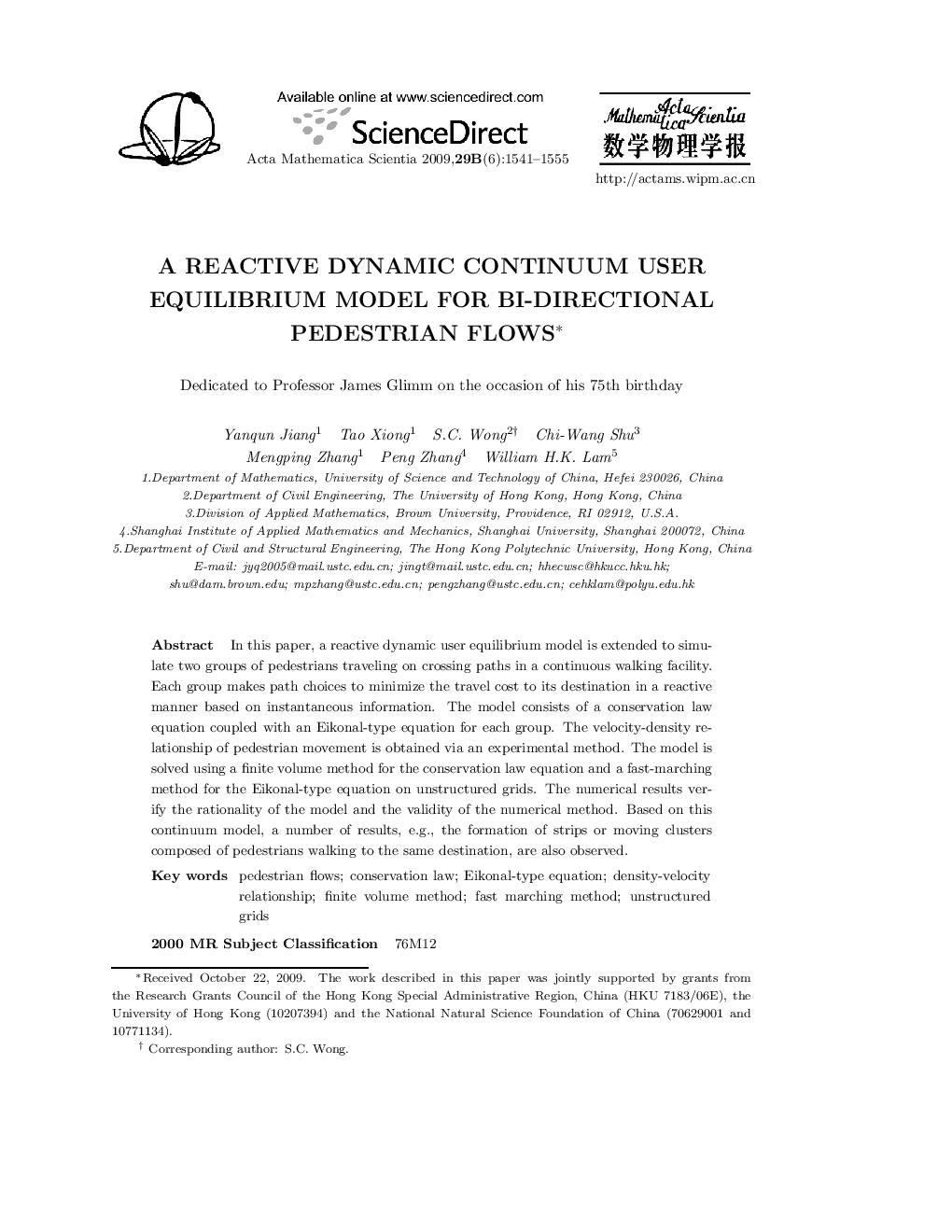| Article ID | Journal | Published Year | Pages | File Type |
|---|---|---|---|---|
| 4664912 | Acta Mathematica Scientia | 2009 | 15 Pages |
In this paper, a reactive dynamic user equilibrium model is extended to simulate two groups of pedestrians traveling on crossing paths in a continuous walking facility. Each group makes path choices to minimize the travel cost to its destination in a reactive manner based on instantaneous information. The model consists of a conservation law equation coupled with an Eikonal-type equation for each group. The velocity-density relationship of pedestrian movement is obtained via an experimental method. The model is solved using a finite volume method for the conservation law equation and a fast-marching method for the Eikonal-type equation on unstructured grids. The numerical results verify the rationality of the model and the validity of the numerical method. Based on this continuum model, a number of results, e.g., the formation of strips or moving clusters composed of pedestrians walking to the same destination, are also observed.
